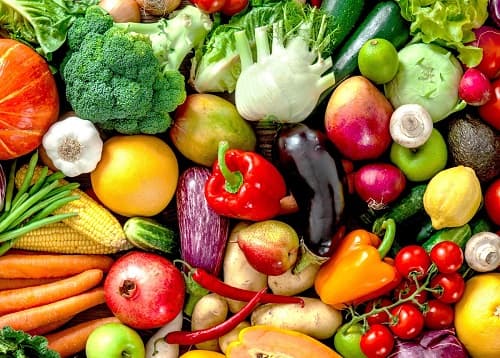4 Tips on Shipping Food During Produce Season
May 21, 2020

Produce season is here, which means a large volume of fruits and vegetables are being shipped all over the country. To get your produce delivered fresh and on time, you’ll need to keep it cold and secure. You’ll also need to work with a reliable carrier that’s experienced in shipping food.
Freightquote by C.H. Robinson helps businesses ship fresh produce across the country. With our help and guidance on how to ship food, our customers can deliver perishables without running into common issues such as spoilage, staleness, contamination, or soggy boxes. And, we’re here to do the same for you.
To help you get started, we’ll answer one of the most frequently asked shipping questions (can you ship food) and provide you with four tips on how to deliver your produce with maximum freshness.
Can You Ship Food?
Yes, you can ship food domestically. When it comes to produce season, businesses ship farm-produced crops including fruits, vegetables, grains, oats, and other foods in high volume. But shipping food comes with a unique set of challenges that must be addressed during the packaging, shipping, and delivery process. Shippers must consider food temperature requirements, weather conditions, and distance. Ideally, food should be delivered as fresh as it was when it was harvested.
Four Tips on How to Ship Food During Produce Season
Now that you know it’s indeed possible to ship food, we’ve gathered four keys to doing it right. Here are our expert tips on how to ship food:
- Choose the right packaging
- Select the proper cold-storage options
- Choose fast shipping times
- Track your shipments online
1. Choose the Right Packaging
Packaging plays a big role in keeping food fresh during shipping. The right boxes and materials prevent food from getting soggy or damaged during shipping. The right packaging also helps to avoid food contamination. While shipping food, your packaging and how it’s put together is of utmost importance to ensure food safety and quality.
At Freightquote, we recommend customizing your packaging based on the type of food you plan to ship. When it comes to fruits and vegetables, for example, it’s important to keep the produce dry and padded to avoid bruising. Along with choosing the right packaging, make sure to fill any extra space in the box with bubble wrap or paper to prevent bruising.
Fresh flowers are also considered produce. And like fruits and vegetables, flowers are sensitive to temperature and getting bruised during transit. For flowers, go with a strong, corrugated box and use proper packaging materials such as light packing paper.
2. Select the Proper Cold-Storage Options
After packaging, cold storage is your next line of defense when shipping food. Many produce items including fruits and vegetables are temperature sensitive. These perishable goods must be not only shipped in the right temperature, but also protected from weather conditions such as extreme heat and humidity.
You have many different cold storage options depending on the type of produce you plan to ship. It’s important to get proper insulation, refrigerants, and packaging materials.
We recommend sturdy, insulated foam containers for frozen items, meat, and seafood. You can also use gel packs to keep foods cool or dry ice for items that you need to keep frozen.
To prevent soggy boxes, we recommend lining the inside of your packaging with plastic liners. When shipping food, the right packaging materials make all the difference when it comes to keeping your food at the correct temperature.
3. Choose Fast Shipping Times
Once your packaging is set and your cold-storage options are selected, it’s time to choose the right shipping option.
Shipping fresh produce is a time-sensitive matter. That’s why we work closely with thousands of high-quality carriers who are experienced in shipping fresh produce and temperature-controlled freight.
At Freightquote, our online tool makes it easy for you to select fast shipping times based on the type of package you’re sending. All we need is some basic information about your shipment, including commodity and refrigeration needs, and we’ll give you a quote in seconds.
We recommend planning for a transit time of less than 30 hours when shipping food. It’s also a good idea to ship produce earlier in the week to prevent weekend delays.
4. Track Your Shipments Online
Your last key to shipping fresh produce is tracking your shipments. At Freightquote, you can track and trace your fresh produce from start to finish using our online tool. Using this tool you can take control of the shipping experience and make sure your products are delivered fresh and secure.
If you need additional guidance on how to ship food or have specific questions about our freight shipping services, contact our freight experts today.
Topics:
Get Your Shipping Quote

